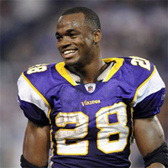Neuromeningeal Traumawork
Neural Manipulation is not usually a stand alone session; it is included when necessary in CranioSacral, Integrative Manual, and Rolfing Therapies.
A nerve only functions correctly when it is free to move within its surrounding structures. This freedom of movement is essential for nerve conduction, neural blood supply, and local and systemic responsiveness. Neural Manipulation identifies and releases local nerve restrictions while at the same time examines the effect of these local fixations on the rest of the body, and by accessing this relationship, resolves the more comprehensive (global) dysfunctional patterns
It is important to note that the release of sensitive nerve buds can have a favorable effect on the functioning of the corresponding visceral organs. The neural manipulation is involved in all body functions and without neural control certain visceral activity cannot be maintained. This feedback loop functions providing no interference (fixation) is present.
Neural Manipulation developed by Jean-Pierre Barral, D.O., and Alain Croibier, D.O, examines mechanical relationships between the cranium/spine hard frame to the dura and neural elements. It provides assessment and treatment approaches to address restrictions of the dural and neural components not commonly focused on with musculoskeletal Neural Manipulation developed by Jean-Pierre Barral, D.O., and Alain Croibier, D.O, examines mechanical relationships between the cranium/spine hard frame to the dura and neural elements. It provides assessment and treatment approaches to address restrictions of the dural and neural components not commonly focused on with musculoskeletal symptoms.
Generally, one thinks of a trauma as a severe injury that causes damage. This definition encompasses different gradients of external forces acting on the body. For example, not every joint trauma leads to a fracture or dislocation, which is verifiable by x-ray. From a medical standpoint, patients are often considered perfectly healthy, even though they are not at all the same as they were before sustaining a trauma. The same is generally true for the neural manipulation and the nerves. Traumatic nerve lesions typically do not result in a recognizable, well-defined clinical picture. Instead a broad spectrum of disturbances can be found. Because of their inconsistency and lack of evidence (with conventional examination methods and imaging procedures) symptoms are often overlooked.
Often functional nerve lesions develop after neurotropic diseases (like herpes zoster — shingles) or a result of postural imbalances. Frequently they derive from mechanical forces and energies: friction, pressure (compression), or traction forces (stretch), all of which affect the nerves. To bring about lesions, a trauma does not have to be severe. Such as a nonphysiological movement, a harmless sprain, faulty posture, or muscle contractions. Often, it is a matter of repetitive micro-traumas. Pathological processes can can take place inside and outside the nerves.
First session, Eval and treatment 1.5 hours $250
Following sessions 60 minutes $150, 90 minutes $250,
Credit card payments add 3%



